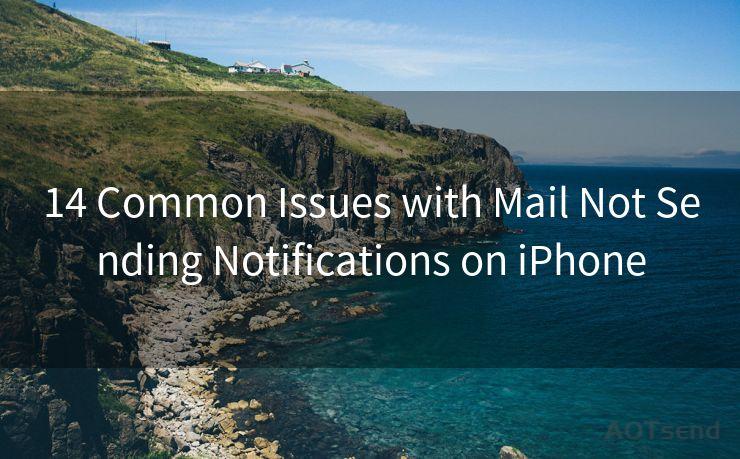14 Common Issues with Mail Not Sending Notifications on iPhone




The iPhone's built-in Mail app is a convenient tool for managing multiple email accounts, but sometimes users may encounter issues with email notifications not working properly. Here are 14 common problems that can cause your iPhone to fail to send email notifications and how to troubleshoot them.
1. Notification Settings Not Enabled
First and foremost, ensure that notifications are enabled for the Mail app. Go to Settings > Notifications > Mail and check that Allow Notifications is turned on. Adjust the alert style, sound, and badge app icon settings as desired.
2. Do Not Disturb Mode Activated
If your iPhone is in Do Not Disturb mode, it will silence all incoming notifications, including email alerts. Disable Do Not Disturb under Settings or via the Control Center to restore notifications.
3. Mail Fetch Schedule
Your iPhone checks for new emails based on a fetch schedule. Go to Settings > Accounts & Passwords > Fetch New Data and ensure that Push is enabled for your email accounts. If not, select a fetch schedule that suits your needs.
4. Low Power Mode
When Low Power Mode is enabled, background activities like email fetching may be reduced. Disable Low Power Mode under Settings > Battery to ensure regular email notifications.
5. Email Provider Issues
Sometimes, the problem may lie with your email provider. Check their status page or contact their support to see if there are any known issues affecting notifications.

6. iOS System Updates
An outdated iOS system can cause compatibility issues with apps, including the Mail app. Regularly update your iOS system to the latest version to ensure optimal performance.
7. Mail App Needs Updating
If you're using a third-party email app, make sure it's up to date. Outdated apps may not function properly with the latest iOS updates.
8. Network Connectivity Issues
A weak or unstable network connection can interrupt email notifications. Ensure your device has a strong and stable internet connection.
9. Email Account Settings
Double-check your email account settings within the Mail app. Incorrect server settings or authentication methods can prevent notifications from working.
10. Device Storage Full
If your iPhone's storage is full, it can affect the performance of apps and notifications. Free up some space by deleting unused apps, photos, or videos.
🔔🔔🔔
【AOTsend Email API】:AOTsend is a Managed Email Service for sending transactional emails. Support Email Types: reminders, authentication, confirmations, notifications, verification codes, invoices, password resets, account activations, billing statements, two-factor authentication (2FA), and one-time passwords (OTP) emails, etc. $0.28 per 1000 Emails. 99% Delivery, 98% Inbox Rate.
You might be interested in:
Why did we start the AOTsend project, Brand Story?
What is a Managed Email API, How it Works?
Best 25+ Email Marketing Platforms (Authority,Keywords&Traffic Comparison)
Best 24+ Email Marketing Service (Price, Pros&Cons Comparison)
Email APIs vs SMTP: How they Works, Any Difference?
11. Background App Refresh Disabled
Background App Refresh allows apps to update their content even when not in use. Enable this feature for the Mail app under Settings > General > Background App Refresh.
12. Notification Center Glitch
Occasionally, a glitch in the Notification Center can cause notifications to stop working. Restarting your iPhone can often resolve this issue.
13. Restricted App Access
Certain privacy settings may restrict the Mail app's access to necessary functions. Check Settings > Privacy and ensure the Mail app has the required permissions.
14. Software Bugs
Software bugs are inevitable, and sometimes they can affect notification functionality. Reporting the issue to Apple and waiting for a software update is often the best solution in such cases.
Troubleshooting email notification issues on your iPhone can be frustrating, but by following these steps, you should be able to pinpoint and resolve the problem. Remember to regularly check for updates and maintain your device to prevent future issues. If all else fails, contacting Apple Support or visiting an Apple Store for professional assistance is always an option.




Scan the QR code to access on your mobile device.
Copyright notice: This article is published by AotSend. Reproduction requires attribution.
Article Link:https://www.mailwot.com/p2269.html



